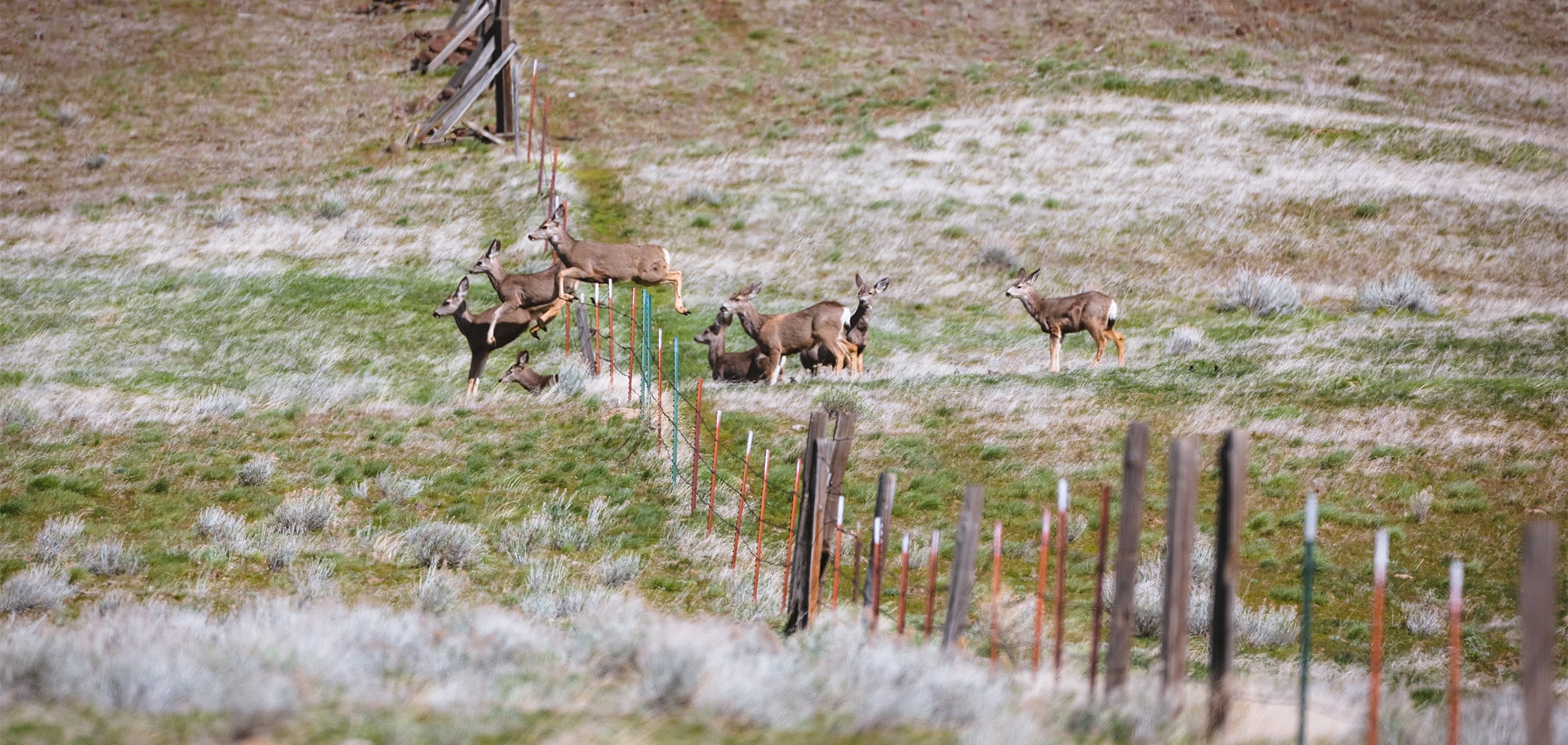I remember the day I first saw Joe Riis’s portfolio of migration photography. He’d spent over six years hiking to remote places, installing and managing motion-sensored cameras, and concealing himself in blinds to capture a body of work that told the story of migration. He’d captured herds of mule deer in chest deep snow making their way across the prairie, Elk with brand new calves crossing high mountain passes, and pronghorn swimming across rivers thick with runoff. There were also images of pronghorn standing with their legs caught irreversibly in fences, groups of mule deer one-by-one attempting to cross high-trafficked roads, and animals simply stopped at man-made barriers. It was unlike any other wildlife photography I’d ever seen. It captured immense beauty, determination, struggle, exhaustion, and death.

His images changed how I thought about habitat. I used to think wildlife, especially deer, elk, bighorn sheep and antelope had space in the West to find what they needed to survive–space enough to work around our roads, fences and developments. I thought that if encumbered, wildlife would simply choose another path. It is only in recent years through Joe’s work, and that of groups like the Wyoming Migration Initiative who work to collar animals and map routes, that I’ve come to understand just how important and habitually specific migration routes are to these species.

Look at the hard-hooved, stout, muscular body of an elk or mule deer long enough and you can start to understand how they were built to migrate. Deer, elk, moose, bighorn sheep, bison and antelope all require large, connected landscapes to survive in a climate where snow shuts down high mountain habitat in the winter, and heat and dry conditions make lower elevations inhospitable in the summer. Their lives and locations are determined by the survivability of the landscape, and where and when they have the best chances of producing offspring. Season to season, they endure long distances to follow the spring green up and put on fat and produce milk for newborn calves, fawns and lambs after making it through the winter. For some, this can mean hundreds of miles of travel like that of pronghorn - making theirs the longest migration in the western hemisphere second to that of the Arctic caribou. Mule deer can travel hundreds of miles to meet their needs, repeating the same path year after year. They take advantage of high-elevation forage in the summer and retrace their journey back to lower elevations to inhabit winter ranges.

Seeing is believing. These mapped wildlife routes show how these animals are not choosing where they want to go but navigating where they have to go. Vast areas of habitat are proven complicated by a litany of land use cases. Roads, highways, towns, cities, reservoirs, and fences turn habitual migration corridors into fragmented islands. We’ve created our infrastructure with no attention to their needs. We are, however, entering a new era. The visualization of migration routes and loss of species along roads has made man-made barriers and pinch points undeniable. We are seeing successful advocacy across the West for infrastructure that allows for safe passage of wildlife like underpasses and overpasses on freeways, land bridges over fences, and communities banding together to remove outdated fencing. Precedent setting just this year, the federal government approved significant funding in the most recent infrastructure legislation to fund wildlife corridors.

Everything in an ecosystem is connected. In the case of migration, our conservation programs, land management strategies, and infrastructure must be viewed as such if we are to succeed in supporting wildlife and especially migratory wildlife, across large landscapes.

To learn more about the Wyoming Migration Initiative, view some of these amazing images for yourself, and learn about how SITKA Gear has supported these initiatives through our Ecosystem Grants Program, please visit: https://www.sitkagear.com/inside-sitka/migration-crisis-crossing-the-void and http://migrationinitiative.org
